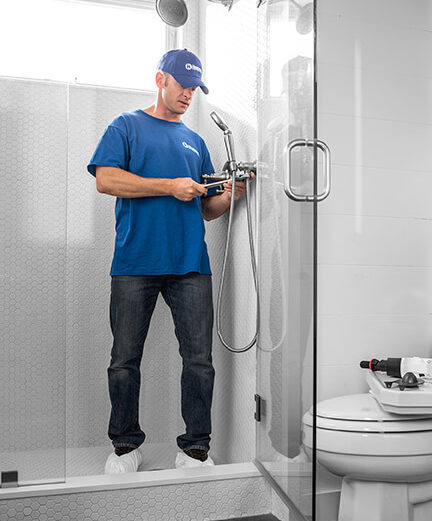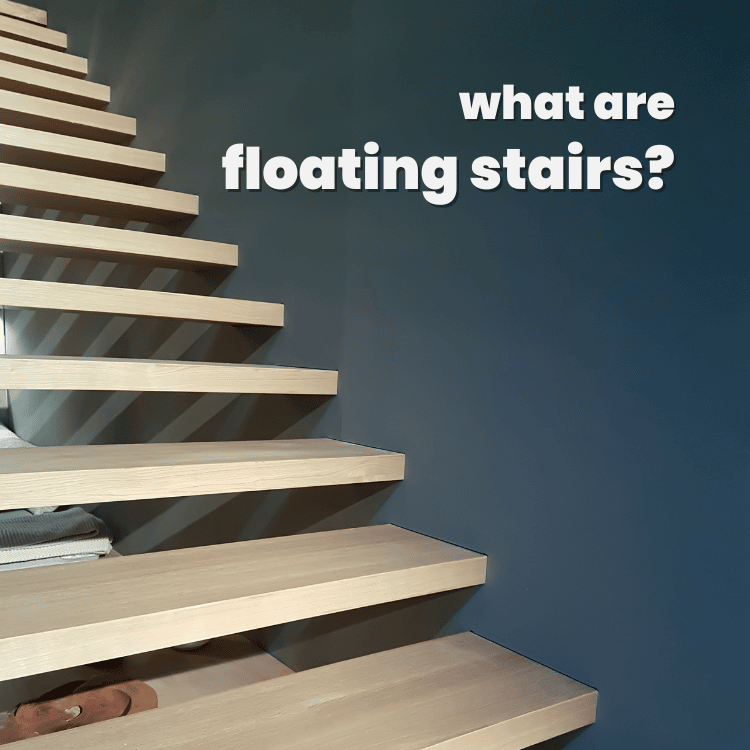We offer a wide range of services for that fresh look, or just maintenance or updates to keep your home functioning and safe. Regardless of the size of the job, we have a craftsman that can tackle it. We offer a wide range of services for that fresh look, or just maintenance or updates to keep your home functioning and safe. Regardless of the size of the job, we have a craftsman that can tackle it.

Carpentry / November 30, 2022

Have you ever seen a staircase that looked as though it was suspended in midair? The term for this is a floating staircase. Of course, it doesn’t really float; it is designed and engineered to trick the eye to create that illusion. The result is a sleek, minimalist look that is a must in any modern or contemporary style home. Are floating stairs right for your home? Should you call a carpenter in Kitchener, Ontario to have one installed? Before making any decisions, here is what you should know about floating stairs.
Another name for floating stairs is open-riser stairs. The tread of a traditional stair is the horizontal part that you step on, while the riser is the vertical part that connects one stair to the next. Floating stairs dispense with the riser, which makes the treads appear as though they are hanging in space and gives the entire staircase a more open appearance.
Floating stair treads can be made from wood, metal, or other materials. They can be configured in almost any pattern, from straight stairs to spiral stairs to L-shape or U-shaped designs. They can go against the wall or appear in the middle of the room. They can also be interior or exterior.
A stringer is a structural element that supports staircases from the bottom or sides. A traditional staircase has three stringers, but you usually cannot see them because they are hidden behind drywall.
Most commonly, a floating staircase only has one stringer. It is typically made of steel and supports the stairs from the bottom. Floating staircases can also have side stringers or double stringers. Some stringers support the stairs from the ceiling; these may be made of glass so they can provide support without calling attention to themselves.
There are also ways to support floating stairs without stringers. Some use wall pockets or hidden metal frames.
Floating stairs are inherently modern, so they can provide an update to an outdated room. They are a more efficient use of space because the area underneath the stairs remains completely open to the rest of the room. Because of the spaces between the treads, floating stairs allow more natural light into the room. As a result, they can make a small space seem bigger and more open. A floating staircase is minimalist, meaning that you can draw more attention to other areas of the room, but because it is so visually arresting, it can also become the main focal point of the room, depending on your overall decorating scheme.
When installed correctly, floating stairs are as safe as traditional stairs. You can choose railings made of cables, rods, or glass to provide a handhold without spoiling the illusion or blocking the natural light.
Floating stairs are more expensive to install than traditional stairs. The extra expense goes toward ensuring that the stairs are structurally sound.
Though generally safe, floating stairs are not right for everyone. People who have problems with coordination or low vision should not install floating steps. Some people have concerns about having floating stairs with young children in the home, for fear that the risk of injuries from the open space underneath each stair tread could increase. There are ways that parents can mitigate this risk, such as a glass railing or a wider tread. A glass railing can help prevent injuries while maintaining the stairs’ aesthetic, but it could be difficult to keep clean.
Floating stairs have to meet building codes to ensure their safety. Our skilled technicians are familiar with the applicable codes. Whether installing a traditional or a floating staircase, connect with us to have the job done right.